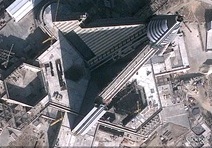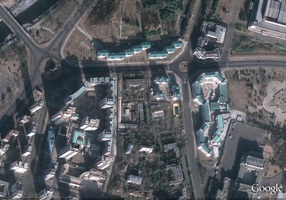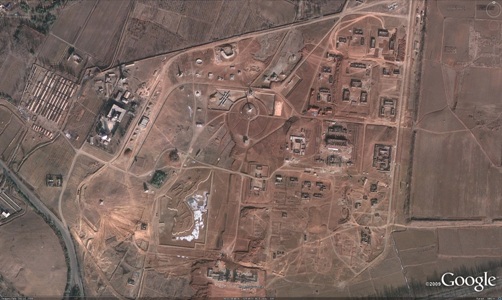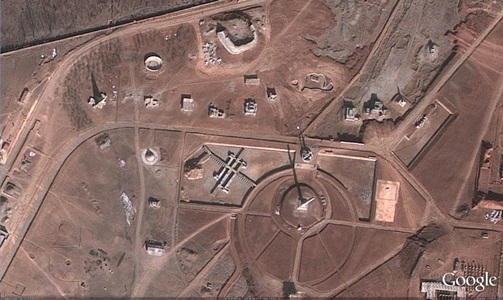Institute for Far Eastern Studies (IFES)
NK Brief No. 10-05-11-1
5-11-2010
As North Korean leader Kim Jong Il spent four nights and five days in China, meeting with President Hu Jintao, Premier Wen Jaibao, and other top Chinese leaders, it appears that the issue of bilateral economic cooperation was high on the agenda, and was discussed in depth.
‘Strengthening economic and trade cooperation’ was one of the five proposals for bolstering PRC-DPRK relations made by Hu Jintao during the May 5 summit meeting with Kim Jong Il, giving some indication of just how much emphasis he and Kim were putting on economic cooperation during the latest visit.
Hu stated that strengthening cooperation between Beijing and Pyongyang would help both countries build their socialist systems, and would be in their shared interests as it would further development and help to bring peace, stability and prosperity to the region. According to China Daily, the five suggestions made by Hu Jintao are as follows:
1) To maintain high-level contacts. The leaders of the two countries should keep in touch by exchanging visits, as well as sending special envoys and messages.
2) To reinforce strategic coordination. The two sides should exchange views in a timely manner and regularly on major domestic and diplomatic issues, international and regional situation, as well as on governance experience.
3) To deepen economic and trade cooperation. The relevant departments of the two governments should discuss and explore ways of expanding economic and trade cooperation.
4) To increase personnel exchanges. The two sides should expand exchanges in the cultural, sports, and educational fields, and the contacts between the youth in particular to inherit the traditional friendship from generation to generation.
5) To strengthen coordination in international and regional affairs to better serve regional peace and stability.
In response, Kim Jong Il expressed his appreciation for Hu Jintao’s heartfelt invitation and warm greeting, and agreed with Hu’s five suggestions for developing bilateral cooperation. He highlighted the construction of a new bridge over the Yalu River as the latest sign of friendly cooperation between China and North Korea, and added that he “welcomes investment in North Korea by Chinese companies and boosting bilateral working-level cooperation based on the principle of mutual prosperity.”
Economic issues were at the heart of Kim Jong Il’s meeting with Premier Wen Jiabao, as well. Following their meeting, Wen said, “PRC-DPRK economic cooperation has great potential,” and that he actively supports bilateral efforts. He stated that he had high hopes for infrastructure projects and other cooperative efforts in the border region.
He went on to say, “China actively supports North Korea’s economic development and improvements in the lives of its people,” and that he would like to introduce to North Korea “Chinese-style know-how” by sharing China’s experiences with reform and economic construction.
In October of last year, Premier Wen introduced the “Chang-Ji-Tu Development Plan” during his visit to North Korea, pushing hard for the North’s cooperation in developing the border region. That, along with North Korea’s extension of the contract giving Chinese companies access to Rajin Port and the latest talks during Kim’s visit to China give a clearer picture of the future direction of PRC-DPRK cooperative economic efforts.
The Chang-Ji-Tu plan to develop the Jilin and Tumen River regions calls for the establishment of an economic ‘beltway’ by 2020, and the revival of the antiquated industrial areas of China’s three northeastern provinces. To be successful, the plan requires North Korean cooperation on securing access to the East Sea. In 2008, North Korea granted China usage rights to Pier 1 in Rajin Port, and then signed an agreement with China last November on the joint development of the port into an ‘international distribution hub’ providing a link for China to the global market. China’s Jilin Province has already earmarked 3 billion yuan (500 billion won) for Rajin Port’s development.
This, along with the construction of a new border-crossing bridge on the Tumen River and other similar projects, reflects the infrastructure development plans for the border region. Construction on the new 33 meter-long bridge began last October, and China is bearing the burden of a 1.7 billion yuan (290 billion won) price tag. In March, China also began restoration of the bridge over the Tumen River linking Hunchun and North Korea, and is expected to move forward quickly with a road construction project linking the bridge to Rajin Port.
Another cooperative effort is focused on the development of the Hwangeum Industrial Complex, a free trade zone on Hwanggeum Island, in the Tumen River. Ryongaksan General Trading Company, which currently holds the development rights to Hwanggeumpyeong and Uihwa islands, is actively seeking to attract foreign investment. Kim Jong Il’s latest trip to China is seen by some as an opportunity to push for increased Chinese investment and assistance in developing the region.
Workers’ Party of Korea Unification Strategy Department Director Kim Yang Gong, as chairman of the Korea Taepung International Investment Group, traveled with Kim Jong Il in China, and it appears to have been in order to more strongly call for investment in North Korea, and the development of Rajin Port, in particular.
Beijing permitting North Korean sight-seeing tours and joint development in its three northeastern provinces indicates its support for the increasing pace of bilateral economic cooperation with Pyongyang.




